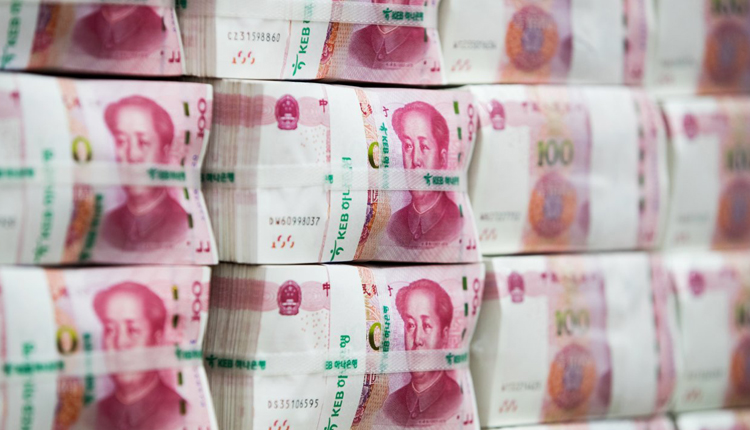China sets daily yuan midpoint at 7.0312/dollar
China’s central bank fixed on Wednesday the official midpoint reference for the yuan at 7.0312 per dollar — stronger than Tuesday’s fixing, and stronger than what analysts had expected.
It was, still, the fifth consecutive session where the People’s Bank of China (PBOC) set the midpoint at a level weaker than the psychologically important 7-yuan-per-dollar mark.
Analysts were predicting the midpoint to be set at 7.0502 per dollar, according to Reuters estimates. The onshore yuan last traded at 7.0558 in Tuesday’s session, and on Wednesday morning around 10.00 a.m. HK/SIN was at 7.0236. The offshore yuan traded at 7.0397 against the dollar, slightly weaker than Tuesday’s close but stronger than the end of last week, when it hovered around the 7.09 level.
The yuan depreciated past 7 per dollar last week for the first time since the global financial crisis of 2008, which prompted the U.S. Treasury Department to designate China as a currency manipulator.
A weaker currency makes a country’s exports more attractive in international markets and U.S. President Donald Trump has complained that a cheaper yuan will give China a trade advantage.
The PBOC lets the currency’s spot rate trade with a range of 2 percent above or below the day’s official midpoint fix and this is known as the onshore yuan. The less restrictive exchange rate used outside mainland China is known as the offshore yuan.
Investors usually look at the difference between the onshore and offshore exchange rates to determine if the Chinese central bank is manipulating the yuan.
According to David Dollar, a Brookings Institution senior fellow, China is not manipulating its currency.
“Given the tariffs that the U.S. has imposed on China, it’s natural for the Chinese currency to depreciate. Most emerging market currencies are depreciating against the dollar if you look at the last half year or so,” he told CNBC on Wednesday.
Due to slowing growth and investment in China, the yuan could even continue to gradually weaken up to 7.2 against the dollar, said Max Lin, emerging markets Asia strategist at NatWest Markets.
Despite that, the possibility of investors moving their money out of China due to the weakening yuan is limited, he said.
“I don’t expect any capital flight concerns to actually occur, just because I think any kind of weakness from here on out would be very gradual. If there are signs of panic dollar buying onshore, I think at that point, the Chinese central bank would definitely step in to stabilize the yuan,” he told CNBC on “Squawk Box.”
Source: CNBC


